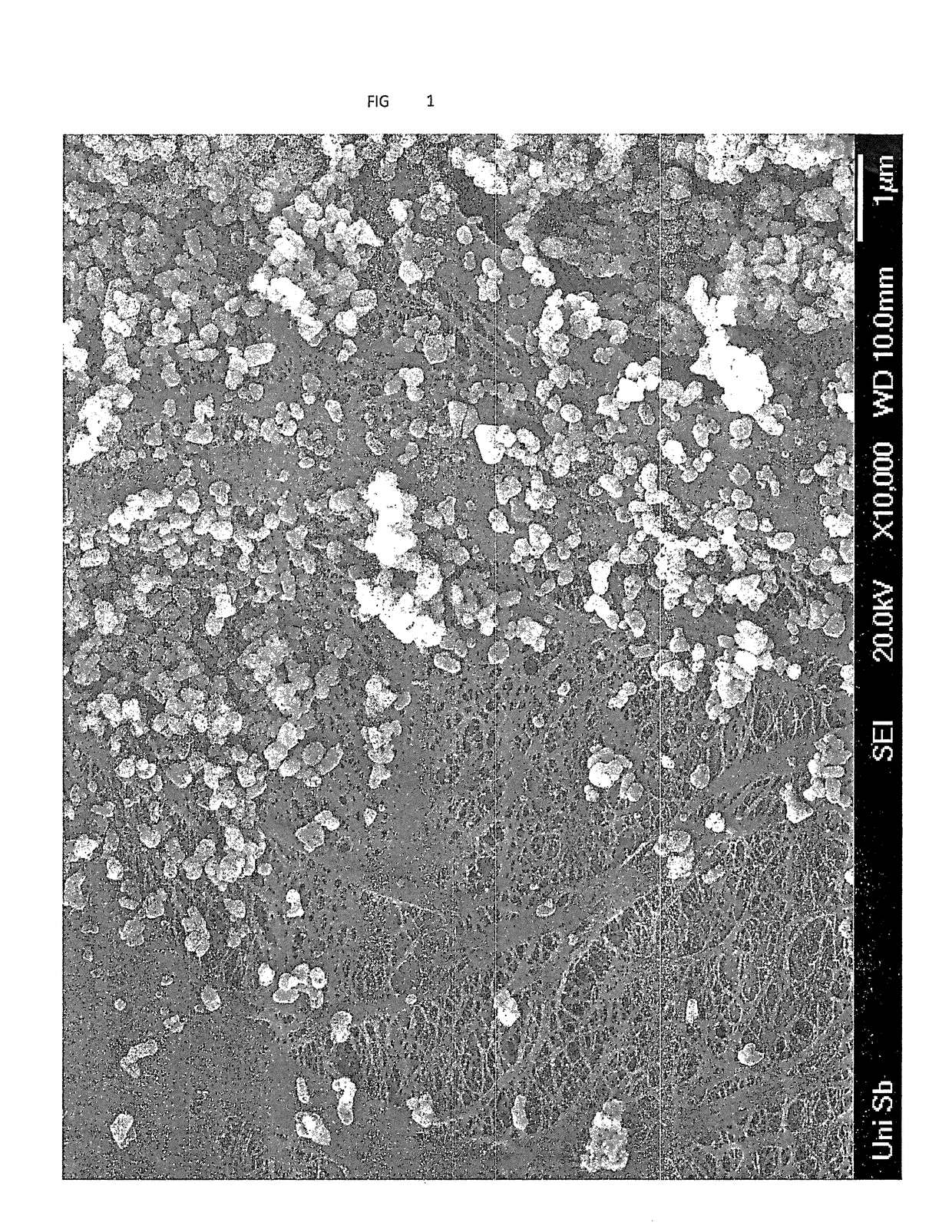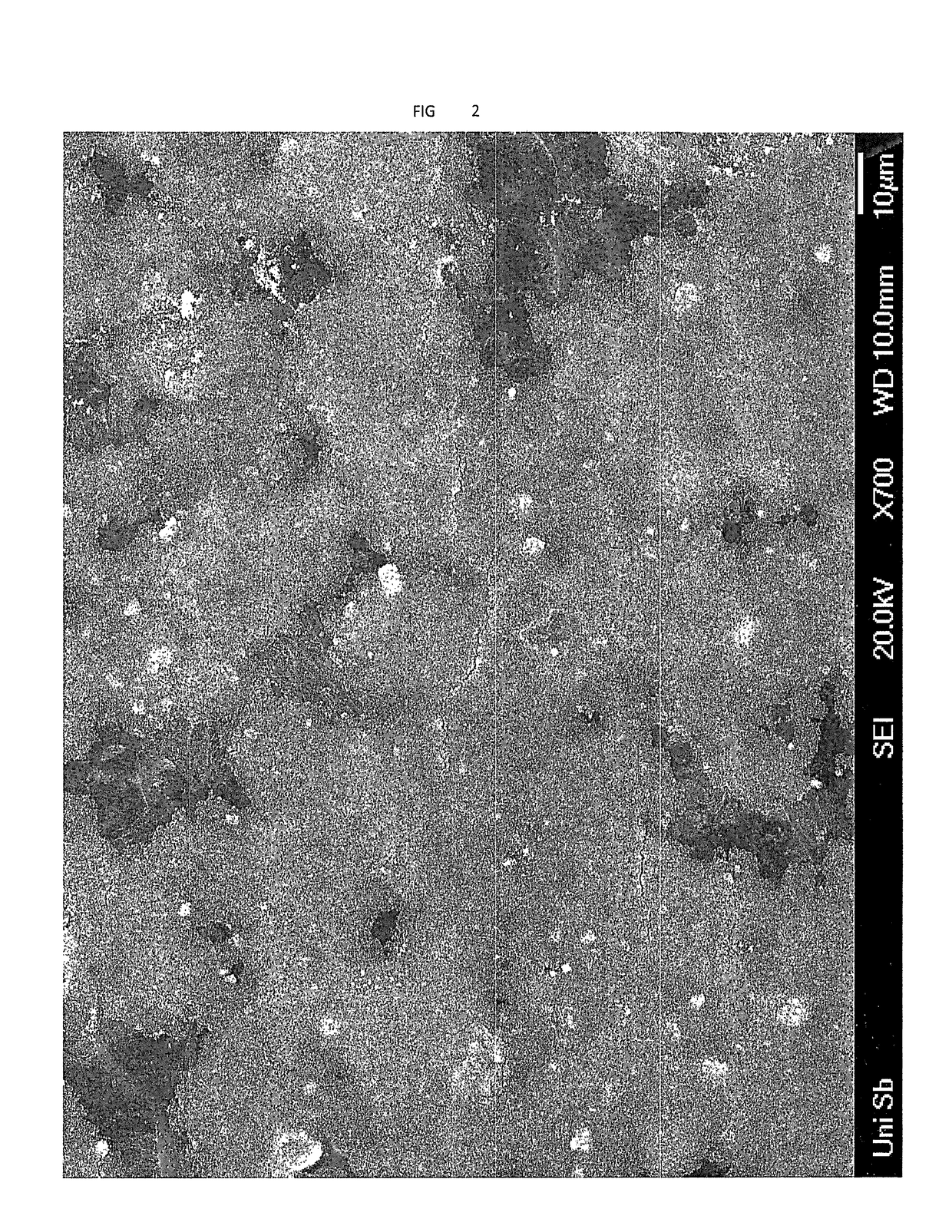Highly porous separator film having partial coating
a separator film, high-porous technology, applied in the direction of secondary cell servicing/maintenance, cell components, final product manufacturing, etc., can solve the problems of battery having to be disposed, occurrence of short circuits is a problem, and devastating consequences of short circuits, etc., to achieve excellent mechanical strength, high porosity and permeability, and sufficient safety
- Summary
- Abstract
- Description
- Claims
- Application Information
AI Technical Summary
Benefits of technology
Problems solved by technology
Method used
Image
Examples
example 1
[0206]Powdery TiO2 pigment (Table 1, Coating 1) was applied using a rubber doctor blade to a microporous BOPP film (film example 1). The coating demonstrated good adhesion on the film. The application weight of the coating was then determined by weighing, and the air permeability was determined on the basis of the Gurley value. The REM recordings show the partial areas on the film filled with the particles. Only a small rise of the Gurley value was observed.
example 2
[0207]Powdery TiO2 pigment (Table 1, Coating 1) was applied using a rubber doctor blade to a microporous BOPP film (film example 2). The coating demonstrated good adhesion on the film. The application weight of the coating was then determined by weighing, and the air permeability was determined on the basis of the Gurley value. The REM recordings show the partial areas on the film filled with the particles. Only a small rise of the Gurley value was observed.
example 3
[0208]A dispersion of TiO2 in isopropanol (Table 1, Coating 3) was applied to a microporous BOPP film (film example 1) using a wire rod (wire diameter: 0.3 mm). Once dried for 30 min for 90° C. in a drying cupboard, the application weight of the coating was determined by weighing, and the air permeability was determined on the basis of the Gurley value. Only a small rise of the Gurley value was observed. REM recordings show the partial areas on the film filled with the particles.
PUM
| Property | Measurement | Unit |
|---|---|---|
| porosity | aaaaa | aaaaa |
| density | aaaaa | aaaaa |
| thickness | aaaaa | aaaaa |
Abstract
Description
Claims
Application Information
 Login to View More
Login to View More - R&D
- Intellectual Property
- Life Sciences
- Materials
- Tech Scout
- Unparalleled Data Quality
- Higher Quality Content
- 60% Fewer Hallucinations
Browse by: Latest US Patents, China's latest patents, Technical Efficacy Thesaurus, Application Domain, Technology Topic, Popular Technical Reports.
© 2025 PatSnap. All rights reserved.Legal|Privacy policy|Modern Slavery Act Transparency Statement|Sitemap|About US| Contact US: help@patsnap.com


